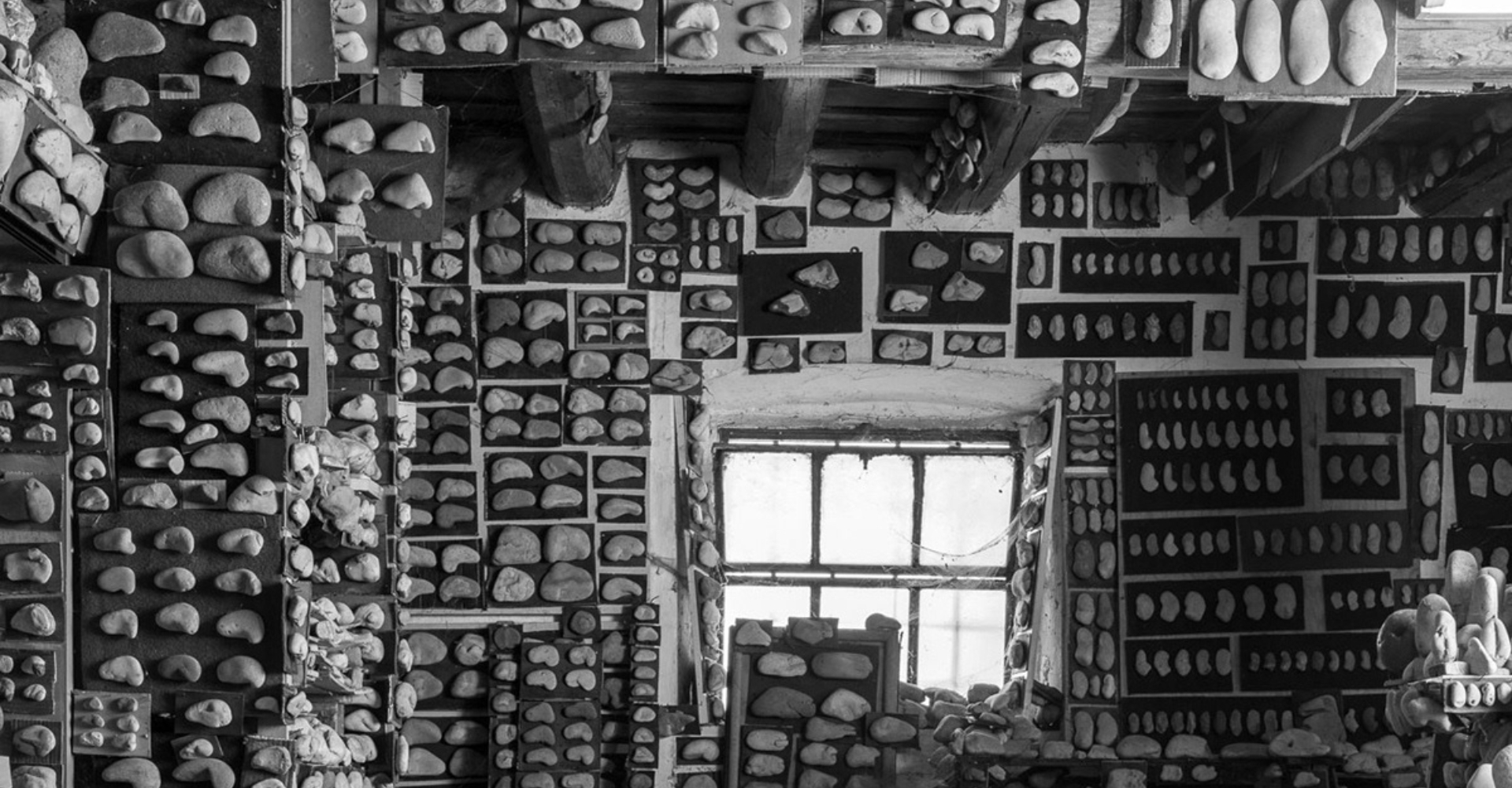On an ordinary afternoon in 1970, Luigi Lineri was walking along the bed of the River Adige. Instead of gazing at the sky or watching the water flow, his eyes kept landing on stones that bore striking similarities. He began collecting them, describing the experience as “a strange dialogue between man and stone, past and present.” Over the course of fifty years, the artist and poet has gathered thousands of these river stones, categorizing them into groups such as “sheep heads,” “snouts,” “bodies,” and “faces.” The surfaces of his home are now adorned with boards displaying these families of stone forms.
Lineri’s choice to work with stone carries deep significance within the broader discourse of kinship across species and timelines. In her 2016 book Geontologies: A Requiem to Late Liberalism, anthropologist Elizabeth Povinelli explores the concept of “life in dead matter” or “life in the remainders of life.” She challenges the notion of stone as static and lifeless, arguing instead that its very existence is borne from an immeasurable history of microscopic life forms. Both Lineri and Povinelli see stone as an interconnected entity with its own life stories and relationships; archiving and classifying it simply renders it an artifact.
Across both British and Italian built environments, stone has been a material to build with, to walk upon in communal spaces, and to touch in historic structures that bear witness to life’s milestones. The practice of Spolia, in which stone is taken from an old structure and repurposed for new construction with minimal intervention, represents a rare moment where the life cycle of stone and human construction needs briefly overlap. In today’s design landscape, the urgency for circular practices like Spolia has never been greater, as extractive material production is no longer justifiable in terms of carbon cost.
Inspired by Lineri’s captivating taxonomy of river stones and Povinelli’s assertion that stone is as alive as our own bodies, Mitra & Mondays propose to create an interactive installation that explores the practice of Spolia. Our collection of local stones will not be presented as an endpoint but rather as a waystation in their ongoing journey.
Archiving materials fosters a deep understanding of their properties, but it is often an extractive act, marking the end of an object’s material cycle. How can this process of categorization inspire a design practice that encourages circularity rather than stagnation? Our installation will investigate this question by examining the reuse of stone through Spolia, drawing parallels between British and Northern Italian architectural traditions. The goal is to create a zero-waste exhibition, where all materials are merely borrowed from their onward destination.
Mitra & Mondays will engage with stone not as a symbol of lifelessness, but as a material infused with the histories of countless microscopic lives, existing across unfathomable timelines. Beyond this, the act of “making” will be central to our approach, as we explore how these concepts of kinship and cross-species collaboration can enable viable, interdependent construction methods that are wholly appropriate for the times we live in.
The concept of kinship relies on collaborations between species, materials, and histories. In the same way, this research must exist within a collaborative and progressive environment—one that nurtures interconnected ideas and fosters a sustainable, shared future for all.
COMMISSIONED BY

British Council as part of the “Circular Cultures” programme.
